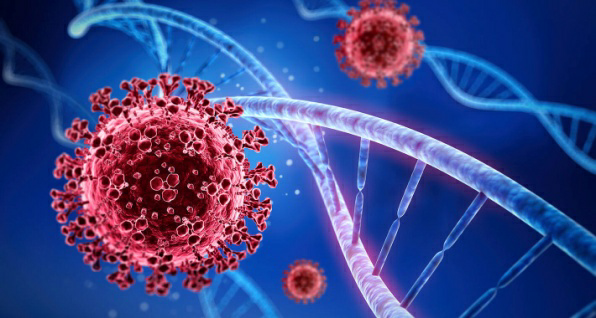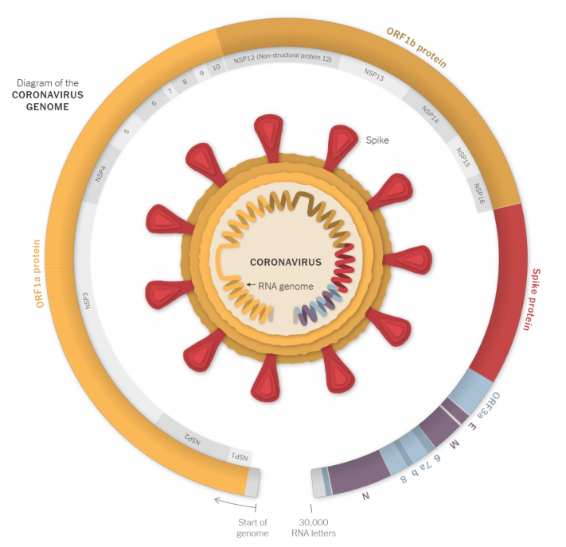




Disclaimer: Copyright infringement not intended.
Context
About
What is Mutation?
|
Basics of DNA and RNA ● DNA, or deoxyribonucleic acid, is the hereditary material in humans and almost all other organisms. ● The information in DNA is stored as a code made up of four chemical bases: adenine (A), guanine (G), cytosine (C), and thymine (T). ● DNA bases pair up with each other, A with T and C with G, to form units called base pairs. ● Each base is also attached to a sugar molecule and a phosphate molecule. ● Together, a base, sugar, and phosphate are called a nucleotide. Nucleotides are arranged in two long strands that form a spiral called a double helix. ● An important property of DNA is that it can replicate, or make copies of itself. ● Each strand of DNA in the double helix can serve as a pattern for duplicating the sequence of bases. ● This is critical when cells divide because each new cell needs to have an exact copy of the DNA present in the old cell.
● Ribonucleic acid (RNA) is a polymeric molecule essential in various biological roles in coding, decoding, regulation and expression of genes. ● Like DNA, RNA is assembled as a chain of nucleotides, but unlike DNA, RNA is found in nature as a single strand folded onto itself, rather than a paired double strand. ● Cellular organisms use messenger RNA (mRNA) to convey genetic information (using the nitrogenous bases of guanine, uracil, adenine, and cytosine, denoted by the letters G, U, A, and C) that directs synthesis of specific proteins. ● Many viruses encode their genetic information using an RNA genome example: SARS Cov-2.
|
SARS Cov-2 Mutants

Variants
Few notable variants of SARS-CoV-2
Variant of Interest
‘Variants of Concern’ (VOC).
To know more about Mutation and variants of SARS-CoV-2 in detail visit: https://www.iasgyan.in/blogs/bengal-strain-all-about-mutation
https://indianexpress.com/article/explained/ihu-variant-few-cases-limited-spread-7706641/






© 2025 iasgyan. All right reserved